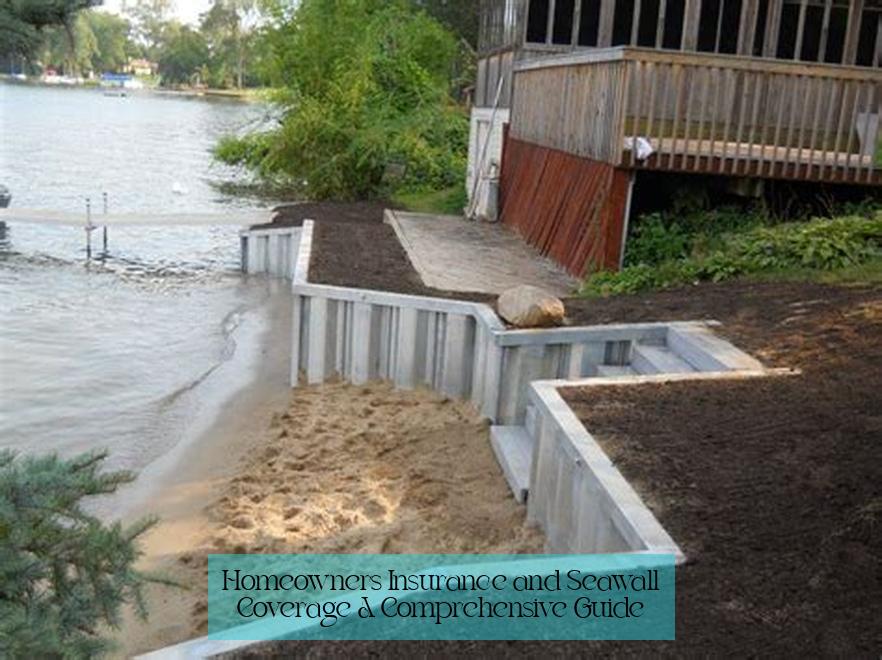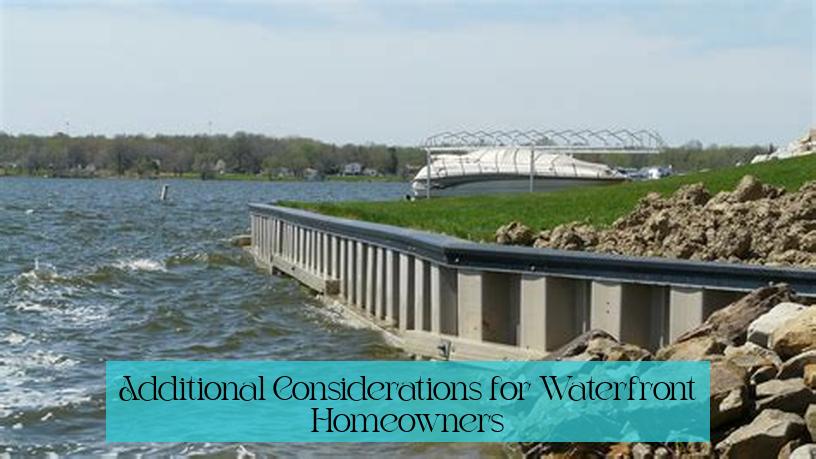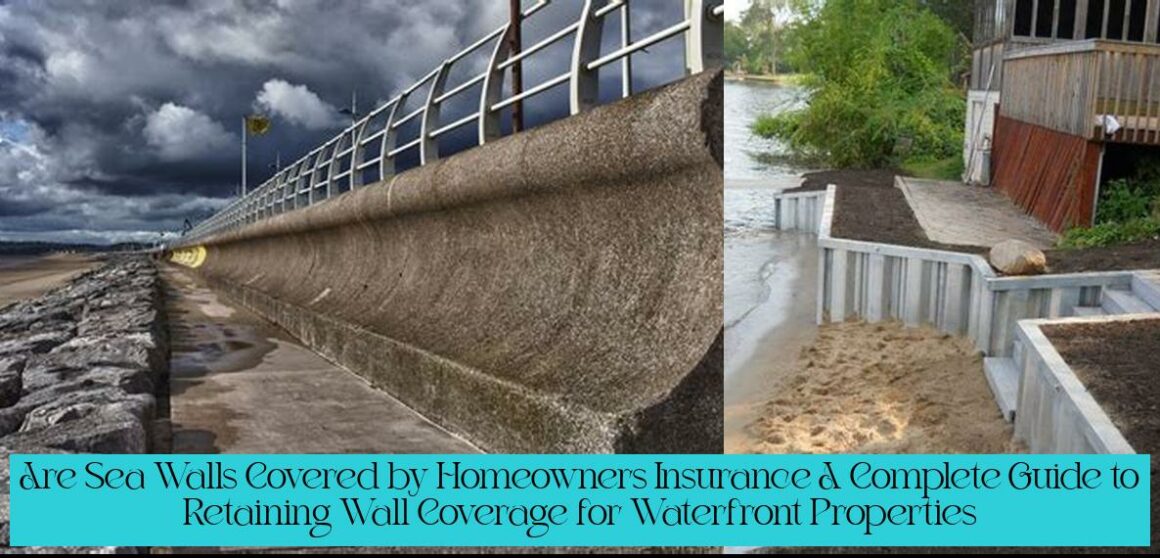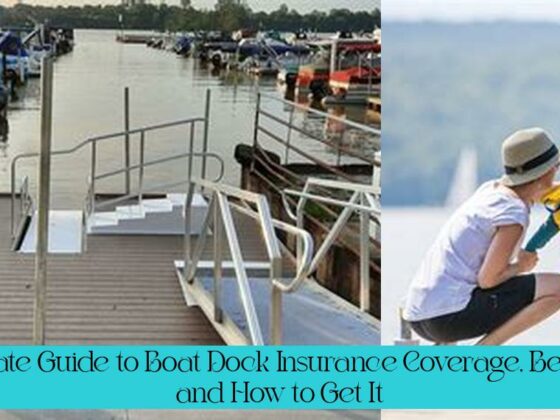Are sea walls covered by homeowners insurance? If you’re a waterfront homeowner, this question may have crossed your mind more than once. From storm damage to subsidence, understanding the ins and outs of retaining wall coverage in your homeowners insurance policy is crucial. In this comprehensive guide, we’ll dive into the nitty-gritty details, uncovering what’s covered, what’s not, and how you can ensure your waterfront structures are protected. So, grab a cup of coffee and let’s unravel the mysteries of seawall coverage together!
Key Takeaways
Homeowners insurance may provide coverage for retaining walls and privately owned seawalls as detached structures, depending on the cause of loss.
Damage to retaining walls and fences can be covered under homeowners insurance under the right conditions, such as storm damage, fire, wind, or other specified causes.
Cracks related to subsidence in walls may be covered by homeowners insurance, but those due to natural settlement, lintel failure, or thermal movement may not be covered as they are considered wear and tear.
Earth movement events like landslides are typically excluded from standard homeowners insurance policies, but coverage can be obtained through a “Difference in Conditions” policy.
Waterfront structures like docks, seawalls, and retaining walls may not be covered by standard homeowners insurance policies, so it’s important to check the specific coverage for these structures.
Each homeowners insurance policy may differ in coverage for retaining walls and seawalls, so it’s essential to review the policy to understand the extent of coverage.
Homeowners Insurance and Seawall Coverage: A Comprehensive Guide

Homeowners insurance is a vital form of protection for your property and its contents. However, it’s important to understand what’s covered and what’s not. One area that can be confusing is seawall coverage.
What is a Seawall?
A seawall is a structure built to protect a shoreline from erosion and flooding. Seawalls can be made of various materials, including concrete, stone, or metal. They are typically constructed along coastal areas or other bodies of water.
Is Seawall Damage Covered by Homeowners Insurance?
The answer to this question depends on several factors, including the cause of the damage and the specific terms of your homeowners insurance policy.
In general, most homeowners insurance policies will not cover damage to seawalls caused by gradual erosion or wear and tear. However, they may provide coverage for damage caused by sudden and accidental events, such as storms, hurricanes, or floods.
What to Do If Your Seawall is Damaged
If your seawall is damaged, it’s important to contact your insurance company as soon as possible. They will be able to assess the damage and determine whether it is covered under your policy.
If your insurance company denies your claim, you may have other options for obtaining compensation. You may be able to file a claim with the government or seek legal action against the party responsible for the damage.
Tips for Protecting Your Seawall
There are several things you can do to protect your seawall from damage, including:
- Inspect your seawall regularly for signs of damage.
- Repair any damage promptly.
- Plant vegetation around your seawall to help stabilize the soil.
- Avoid building or placing heavy objects on your seawall.
By following these tips, you can help keep your seawall in good condition and reduce the risk of damage.
Understanding Retaining Wall Coverage in Homeowners Insurance
Retaining walls are another type of structure that can be damaged by storms and other natural disasters. Like seawalls, retaining walls may or may not be covered by homeowners insurance, depending on the cause of the damage and the specific terms of your policy.
What is a Retaining Wall?
A retaining wall is a structure built to hold back soil or other materials. Retaining walls are commonly used on slopes or hillsides to prevent erosion and landslides. They can also be used to create raised garden beds or other landscaping features.
Is Retaining Wall Damage Covered by Homeowners Insurance?
Most homeowners insurance policies will cover damage to retaining walls caused by sudden and accidental events, such as storms, hurricanes, or floods. However, they may not cover damage caused by gradual erosion or wear and tear.
What to Do If Your Retaining Wall is Damaged
If your retaining wall is damaged, it’s important to contact your insurance company as soon as possible. They will be able to assess the damage and determine whether it is covered under your policy.
If your insurance company denies your claim, you may have other options for obtaining compensation. You may be able to file a claim with the government or seek legal action against the party responsible for the damage.
Tips for Protecting Your Retaining Wall
There are several things you can do to protect your retaining wall from damage, including:
- Inspect your retaining wall regularly for signs of damage.
- Repair any damage promptly.
- Plant vegetation around your retaining wall to help stabilize the soil.
- Avoid building or placing heavy objects on your retaining wall.
By following these tips, you can help keep your retaining wall in good condition and reduce the risk of damage.
Additional Considerations for Waterfront Homeowners

If you own a home on the waterfront, it’s important to be aware of the unique risks that come with living in a coastal area. In addition to the risks of storms and floods, waterfront homeowners also need to be concerned about erosion, saltwater damage, and other hazards.
Erosion
Erosion is the gradual wearing away of land by water, wind, or ice. Erosion can be a major problem for waterfront homeowners, as it can damage seawalls, retaining walls, and other structures.
Saltwater Damage
Saltwater can be corrosive and damaging to many materials, including concrete, metal, and wood. Saltwater damage can occur to homes, boats, and other structures that are exposed to saltwater.
Other Hazards
Waterfront homeowners may also be at risk for other hazards, such as hurricanes, tsunamis, and storm surges. These hazards can cause significant damage to homes and property.
How to Protect Your Waterfront Home
There are several things you can do to protect your waterfront home from the risks of erosion, saltwater damage, and other hazards, including:
- Build your home on a high elevation.
- Construct a seawall or retaining wall to protect your property from erosion.
- Use saltwater-resistant materials for your home’s construction and maintenance.
- Have a plan in place for hurricanes and other emergencies.
By following these tips, you can help protect your waterfront home and reduce the risk of damage.
1. What is a seawall and where is it typically constructed?
Seawalls are structures built to protect shorelines from erosion and flooding. They are typically constructed along coastal areas or other bodies of water.
2. Is damage to seawalls covered by homeowners insurance?
The coverage for seawall damage depends on the cause of the damage and the specific terms of the homeowners insurance policy. While gradual erosion or wear and tear may not be covered, sudden and accidental events like storms, hurricanes, or floods may be covered.
3. What should I do if my seawall is damaged?
If your seawall is damaged, it’s important to contact your insurance company promptly. They will assess the damage and determine whether it is covered under your policy. If your claim is denied, you may have other options for obtaining compensation, such as filing a claim with the government or seeking legal action.
4. How can I protect my seawall from damage?
To protect your seawall, you can inspect it regularly for signs of damage, repair any damage promptly, plant vegetation around it to stabilize the soil, and avoid building or placing heavy objects on it.
5. Are retaining walls covered by homeowners insurance?
Retaining walls are considered detached structures and may be covered under homeowners insurance, depending on the cause of loss. Coverage may apply to damage caused by fire, lightning, windstorms, hail, and vehicles.
6. Are boat docks covered by insurance?
Boat docks, seawalls, and retaining walls may not be covered by standard homeowners insurance policies. It’s important to review the specific coverage for these structures and consider obtaining additional coverage if necessary.











1 comment